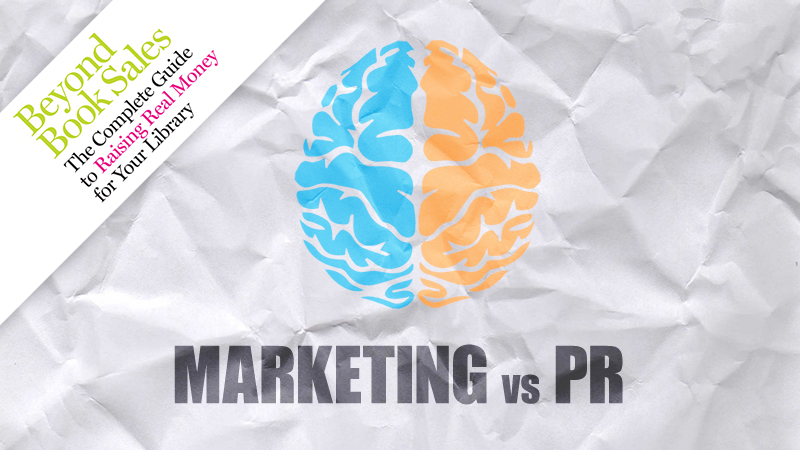Marketing vs. Public Relations

Many people use the terms marketing and public relations interchangeably, assuming they mean the same thing. They do not, although they do have some important aspects in common. Both build a strong foundation for good feelings about your library, and both help attract supporters to your library. Both have the potential to change the way people think, feel, and act.
The American Marketing Association (AMA) defines marketing as a set of processes for creating, communicating, and delivering value to customers and for managing customer relationships in ways that benefit the organization and its stakeholders. Traditional successful marketing comprises a mix of “the Four Ps”:
- The right product
- Sold at the right price
- In the right place
- Using the most suitable promotion.
Marketing is about all those things, but marketing is especially about people. It’s taking what’s true and making it interesting and attractive to your audience. Good marketing takes time. To be successful, you must have a plan and the patience and persistence to pull it off.
Library marketing and marketing for fund-raising are different from traditional marketing because your product is not something tangible. Your product is a strong library and a better community because of it. Thus, the “Four Ps” of traditional marketing—product, price, place, and promotion—are turned somewhat inside out. “Products” can include the programs, services, and resources your library provides, as well as more subtle things like understanding, knowledge, and belief in the role libraries have in improving lives.
“Price,” in the case of public libraries, is what the public contributes to the library’s resources through their tax dollars, but often public funding covers only the “bare bones.” That is why libraries need private charitable donations. There are also other costs to library users, for example, transportation costs associated with getting there to access materials, and returning borrowed items on time.
“Place” refers to not only your location(s), but also public access to your library via its website, social media channels, mobile app, bookmobile, drive-through book drops, satellite community bookshelves, and so on.
“Promotion” can include free media placement and paid advertising; a vigorous social media program using multiple channels; strong, permanent signage; word-of-mouth endorsements and direct mail, just to name a few.
Public relations (PR) is about enhancing your image. It is the practice of managing communication between your library and the stakeholders and audience it serves. Good PR exposes your audiences to stories and news items that illustrate endorsement of your library by community members, business leaders, and elected officials. PR specialists are advocates who help create and protect an organization’s image. They spread good news about their library, or they manage crisis communications by putting a positive “spin” on unfavorable news that may already be circulating. They accomplish this by working with the media, sending out press/media releases, and setting up photo opportunities to show the public that their library is doing great things in the community. They might also speak at conferences and civic events, engage in social media, and conduct employee communications. There are two prime messages you can use to promote your services, and both are about the value of libraries to your community:
Statistics about volume, and positive outcomes. Your library keeps track of many statistics, and people like to see information boiled down to understandable data. How can these be used to illustrate the importance of your library to its community? For example, talk about the number of hours that teens use your library for homework help. Students who do so often report improved grades as a result. (This is anecdotal support but can still convey an honest, powerful message.) The fact that the students keep coming back to the library for help with their homework illustrates the value it adds to their lives.
Stories with emotional impact. Your job is to explain how what you do impacts people’s lives. Don’t be afraid to ask the people who use the library to tell their own stories. Make those whom you’ve helped the voice of your library and its chief outreach ambassadors. You can tell a story that begins with a challenge, but focus on the positive outcome the library helped make possible.
Repetition, repetition, repetition. No matter which messages and themes you choose to use, it’s important to be consistent and repeat them again and again. Most people need to see your message at least three times before they’re going to respond.

